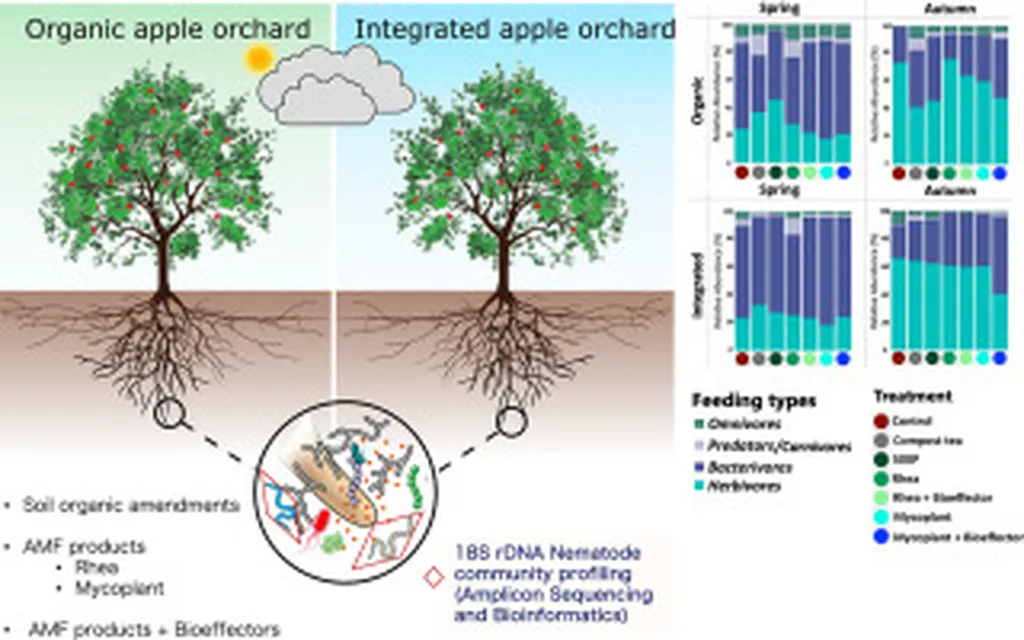In the heart of Bosnia-Herzegovina, a recent nematode survey has uncovered the presence of two significant species, Xiphinema rivesi and Xiphinema incertum, in apple and poplar orchards around Banja Luka. This discovery, published in the journal *Phytopathologia Mediterranea* (which translates to *Mediterranean Phytopathology*), marks the first time these nematodes have been identified in the region, potentially reshaping the agricultural landscape and offering insights into the broader European ecosystem.
The study, led by Elena Fanelli of the Institute for Sustainable Plant Protection-CNR in Bari, Italy, employed a polyphasic identification approach. This method combines morphological, molecular, and phylogenetic analyses to ensure accurate species identification. By examining the D2-D3 expansion segments of the 28S rRNA gene, the ITS regions, and the partial mitochondrial COI region, Fanelli and her team were able to detect high intra- and inter-specific variability within X. rivesi, a finding that could have significant implications for future research and pest management strategies.
“These nematodes are not just passive inhabitants of the soil; they play a crucial role in the ecosystem and can have a substantial impact on plant health,” Fanelli explained. “Understanding their presence and behavior is the first step in developing effective strategies to mitigate any potential damage they might cause.”
The discovery of X. rivesi in apple orchards and X. incertum in poplar trees extends the known geographical distribution of these species in Europe. This expansion raises important questions about how these nematodes might interact with local flora and fauna, and what their long-term effects on agricultural productivity could be. For the energy sector, which increasingly relies on bioenergy crops like poplar, this research could be particularly relevant. Poplar trees are often used in short-rotation coppice systems for bioenergy production, and any threat to their health could have cascading effects on the industry.
“This research is a prime example of how integrative taxonomy can provide valuable insights into the ecological dynamics of our environment,” Fanelli noted. “By understanding the distribution and behavior of these nematodes, we can better prepare for and mitigate any potential impacts on agriculture and bioenergy production.”
The findings also highlight the importance of continuous monitoring and research in the field of nematology. As climate change and global trade continue to facilitate the spread of invasive species, staying ahead of potential threats becomes increasingly critical. This study not only adds to our knowledge of nematode diversity but also underscores the need for proactive measures to protect our agricultural and energy resources.
As the scientific community digests these findings, the hope is that this research will spur further investigation and collaboration. By sharing data and resources, researchers can work together to develop comprehensive strategies that safeguard our ecosystems and ensure the sustainability of our agricultural and energy sectors. The publication of this study in *Phytopathologia Mediterranea* serves as a call to action for scientists and policymakers alike to prioritize the study and management of these important soil-dwelling organisms.

